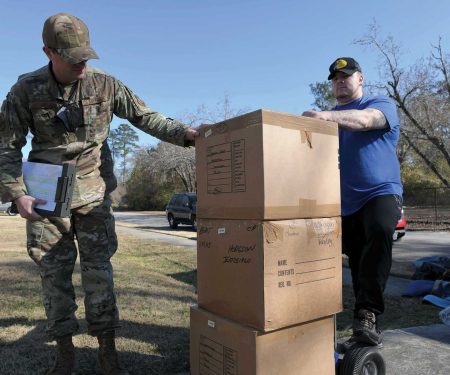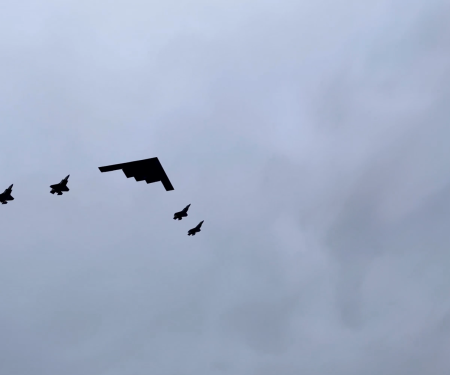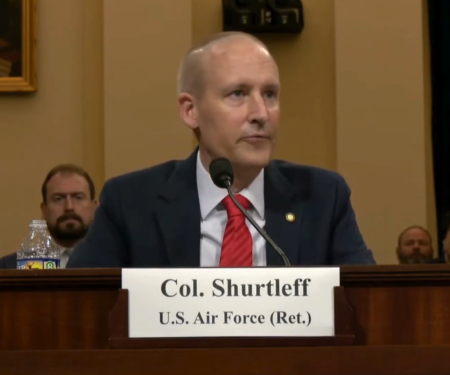Trump and USAF Flourish Greet Putin in Alaska
Independent Federal Study to Probe Cancer Among Military Aviators Under New Law
Strategy & Policy: NATO Members Sign Up for More Spending
Radar Sweep
White House Signals Strong Momentum Toward Peace in Ukraine but Many Questions Linger
President Donald Trump’s foreign envoy Steve Witkoff—one of three American participants in Friday’s summit with Russian President Vladimir Putin—described on Aug. 17 several major agreements reached during the Alaska talks that he said created strong momentum toward a peace agreement with Ukraine.
3 States Sending 700 National Guard Troops to DC
Hundreds of National Guardsmen from three states are being activated to go to Washington, D.C. to aid the military mission in the nation’s capital.
European Leaders will Join Zelensky at White House Visit
European leaders will join Ukrainian President Volodymyr Zelensky for a high-stakes meeting at the White House on Aug. 18 after President Trump’s summit with Russian President Vladimir Putin.
Australian and Philippine Forces Launch Largest Military Exercises near Disputed South China Sea
Australia on Aug. 15 launched its largest military exercises with Philippine forces, involving more than 3,600 military personnel in live-fire drills, battle maneuvers and a beach assault at a Philippine town facing the disputed South China Sea, where the allies have raised alarm over Beijing’s assertive actions.
PODCAST: Homeland Sanctuary Lost: The Arctic Domain Awareness Challenge
During the Cold War, all eyes faced north anticipating a Soviet attack across the North Pole. The U.S. Air Force was front and center operating air defense radars and sitting alert. Decades later, America finds itself coming full circle. Modern airborne threats like cruise and hypersonic missiles, plus long-range drones threaten the homeland. The Arctic remains the most direct path between the U.S. and its adversaries. Our existing radars and defensive systems fall short after decades of underinvestment. Maj. Gen. Pete Fesler, USAF (Ret.), Maj. Gen. Larry Stutzriem, USAF (Ret.), and Brig. Gen. Houston Cantwell, USAF (Ret.) dive into these issues.
Feinberg Orders Major Shakeup in Pentagon’s AI Enterprise
The Office of the Under Secretary of Defense for Research and Engineering is taking over the “authority, direction, and control” of the Pentagon’s Chief Digital and AI Office, according to new guidance issued Aug. 14 by Deputy Secretary of Defense Stephen Feinberg that presents an accelerated plan to disrupt and transform how the emerging technology is adopted across the Defense Department and military.
Trump Aims to Foster Space Industry by Cutting Environmental Regulation
The U.S. government must reduce environmental and other regulations to make it easier for commercial space companies to launch rockets, expand launch facilities, and perform "novel” space activities, according to a new executive order.
Deep-Space Radar Hits Key Testing Milestone
The Space Force’s deep-space radar hit a testing milestone in recent weeks, using seven of its antennas to track multiple satellites in orbit from a site in Australia. The Deep Space Advanced Radar Capability, or DARC, is being built by Northrop Grumman to detect and track activity in geosynchronous orbit—from space debris to hostile movement that could harm U.S. or allied satellites.
Air Force Experimenting with AI Microservices During New Battle Management Wargame Series
The Air Force is jetting ahead with a new experimentation campaign to test how industry-developed artificial intelligence and machine learning software can be integrated into the service’s battle management operations.
Beware ‘Drone-Tastic’ Thinking: UK Armed Forces Chief Says ‘Traditional’ Capabilities Still Matter
Drones alone will not be enough to secure victory in future conflicts, according to the outgoing head of the U.K. armed forces, but the aircraft offer an opportunity to “adjust the way that we’ve traditionally fought” today.
How Airmen Lift 12 Tons Without Breaking a Sweat, or a Plane
American and Serbian Airmen gathered in a hangar the morning of Aug. 15 and made a 12-ton aircraft hover a foot off the ground—but it wasn’t a magic trick. It was part of an annual exercise run by the 86th Maintenance Squadron to prepare airmen to clear damaged planes from a runway.
Fuel Fill-Ups in Space? Musk and Bezos Are Working on It
Elon Musk and Jeff Bezos are trying to figure out how to pump gas in space. The billionaire space rivals are working on ambitious missions to the moon or Mars, and a crucial design element for each venture is using spacecraft that take on additional fuel while orbiting Earth. Vehicles that could grab propellants in orbit would be less weighed down at liftoff, letting planners design missions to travel farther from Earth with more cargo, scientific gear, or crew members, advocates say.




